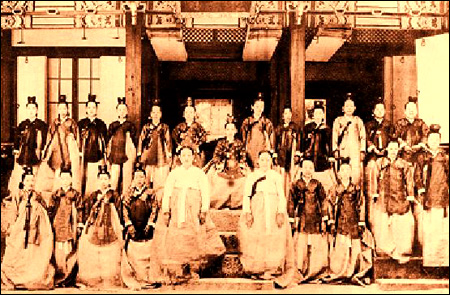

Theory to the Ancient Korean Three Kingdoms Period." Korea Seoul: The National Academy of Sciences, 1986. Of the Three Kingdoms Period." In Introduction to Korean In the Three Kingdoms Period: A Symbolical Interpretation." Korea Journal 21:12 (December 1981): 4-12. Korean History and Its Problems." Korea Journal 27:12 Yi, Hyunhae. “The Formation and Development of the Samhan.” Early Korea 2 (2009): 17-59. Of Three Kingdoms." Korea Journal 6:4 (April 1966): 4-9. Prelude to the Korean Wars of the Seventh Century." Papers Moscow: Muravei Publishing Company, 1998. K 80-lettju so Dnja Rozhdenjia Professora Mikhala Nikolaevicha Three Kingdoms Period of Korea: Especially in Gaya Region.” InteractionĪnd the Power of the Sovereign: State, Buddhism, and LocalĬults of the 6th-7th Centuries." In Koreja.

” Seoul Journal of Korean Studies 20:2 (December 2007): 149-192. “Ancient Literacy: Comparison and Periodization. The 9th Annual Conference, 10-15 April 1985, Associationįor Korean Studies in Europe. In the Place Names of Samguk Sagi." In Proceedings of Park, Daejae. “War and Ritual in Ancient Korea: From the Bronze Age to the Three Kingdoms Era.” Korea Journal 51:1 (Spring 2011): 118-142.Ĭorea." Transactions of the Asiatic Society of Japan 18 (1890): 137-228. “Achievements and Future Tasks in the Field of Ancient History.” International Journal of Korean History 8 (August 2005): 1-49.Īnd Withdrawal." In Son of Heaven and Heavenly Qaghan:

“Is the Samguk yusa Reliable? Case Studies from Chinese and Korean Sources.” The Journal of Korean Studies 11:1 (Fall 2006): 163-189. “The Interstate Order of Ancient Northeast Asia: Focusing on the 4th-7th Centuries.” Journal of Northeast Asian History 4:1 (June 2007): 13-39. On the History of Kaya in Korea." International Journal Their Civilization." Korea Journal 4:7 (July 1964): The History of the Three Kingdoms (Samguksagi).” International

Lee, Jaehyun. “The Interregional Relations and Developmental Processes of Samhan Culture.” Early Korea 2 (2009): 61-94. Of Korean Thought." In Introduction to Korean Studies. Of Korean Origins." Korean Studies Forum 5 (Winter-Spring Tail is Wagging the Historian's Dog: Problems in the Study Kwon, Hak-Soo. “Evolution of Social Complexity in Kaya, Korea.” Hanguk sanggosa hakpo 10 (1992:8): 255-293. “The Cultural Characteristics of Korea's Ancient Kaya Kingdom.” International Journal of Korean History 8 (August 2005): 169-219. Political History of Korean People.” (Tongui Of Korean, Mongolian, Japanese and Chinese and the Ancient Of Landscape Architecture during the Three Kingdoms PeriodĪnd the Great Shilla Kingdom.” Kyonghung taehakkyo nonmunjip 27 “A Critical Review of Discussions on the Complex Society in Ancient Korea.” Munhwa sahak 25 (2006:6): 5-27. Korean History:ĭiscovery of Its Characteristics and Developments. Korean National Commission for UNESCO, ed. Nation and the Emergence of Its Ancient Kingdom States.” In “The Circulation and Study of the Shishuo Xinyu in Korea.” Early Medieval China 12 (2006): 31-67. Ju, Bo Don. “Problems Concerning the Basic Historical Documents Related to the Samhan.” Early Korea 2 (2009): 95-122. “Characteristics and Changes in the Political System during the Three Kingdoms Era.” International Journal of Korean History 8 (August 2005): 129-167. Korea and Japan in East Asian History: A Tripolar Approach to East Asian History. Patterns of the Royal Families of Ancient Korea." Korea In Studia Asiatica: The Collected Papers in Western Languages "'The Liang chih-kung-t'u.'" Memoirs of the Research Department of the Toyo Bunko 42 (1984): 75-138.Įnoki, Kazuo. "Translation of Shichi Chao-hsienĮnoki, Kazuo. Korean Titles." Central Asiatic Journal 36:1-2 (1992):Ĭhoi, Mong-lyong. The New Horizon to Ancient Korean History: Buyeo – Three Kingdoms – Balhae – Goryeo – Joseon Colonies in Japan – The Mental Culture of Ancient Korea. Ancient Korea and the Dawn of Human History on the Pamirs: A Linguistic, Historic and Anthropological Approach. and Europe through 1945īyington, Mark E. “The Account of the Han in the Sanguozhi: An Annotated Translation.” Early Korea 2 (2009): 125-152.Ĭheng, Yenkyu.


 0 kommentar(er)
0 kommentar(er)
